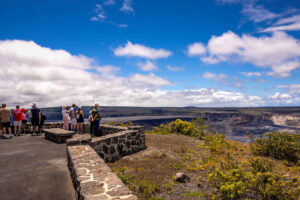Hula dancing a ‘remarkable opportunity’ to promote public health, researchers say
A study on the prevalence and popularity of the art of hula in Hawaii has found a quarter of the state’s residents have danced or still do. And nearly half of those who identified as Native Hawaiian have danced hula.
These key findings from the study by the University of Hawaii at Manoa Office of Public Health Studies “presents a valuable opportunity to innovatively promote public health within mutlicultural communities in the islands,” according to a UH news release.
ADVERTISING
Hula, which is seen by many as an iconic representation of Hawaii, is being celebrated globally this week at the annual Merrie Monarch Festival.
Some forms of dancing require physical activity that can be as vigorous as a basketball game. Kumu hula and scientists agree hula restores and creates health from a multilevel approach involving physical, mental, emotional and spiritual health.
“It is a remarkable opportunity to have a quarter of our state population say they engage in a culturally relevant physical activity,” Tetine Sentell, interim dean of the Thompson School of Social Work & Public Health and study lead, said in the news release. “Overall, strong engagement with hula was seen across gender, age, education, income and health status, especially among Native Hawaiians and Pacific Islanders. Notably, 65% of Native Hawaiian women had participated in hula over their lifetime, as had 31% of Native Hawaiian men.”
Questions about lifetime experiences in hula were added to the Hawaii-specific Behavioral Risk Factor Surveillance System in 2018 and 2019. The BRFSS is a national gold standard surveillance tool providing a picture of public health in the state.
Researchers analyzed results from more than 13,500 respondents to quantify hula engagement across important public health factors. This study was a partnership with the UH Office of Public Health Studies, the Hawaii State Department of Health and the Department of Native Hawaiian Health at UH Manoa’s John A. Burns School of Medicine.
“This work is exciting for health promotion in our state especially from a strength-based approach to build health equity,” Lance Ching, a DOH collaborator, said in the release. “These findings indicate that hula is enjoyed among people in a wide array of life circumstances, making it a promising area for community health promotion to support wellness and prevent chronic disease.”
Given that only 24% of adults in Hawaii meet physical activity guidelines, and rates of physical activity among Native Hawaiians and other Pacific Islanders are lower than the state average, scientists recognize the need for culturally relevant approaches to public health programming, research and practice.
“There are real opportunities here,” said Mele Look, of DNNH and a study collaborator. “We can promote a popular, accessible, health-creating activity that celebrates the best of our island home and Hawaiian culture.”




